Last Sunday, I took a solo hike along Pimmit Run in Virginia, accessing the valley via Fort Marcy, a Civil War fortification off of the George Washington Memorial Parkway. As always, I did a bit of geologizing along the route. One theme that emerged from the day’s photos was quartz veins. These veins form when the host rock (in this case, the Sykesville Formation) cracked open in a brittle fashion, then silicon- and oxygen-bearing hydrothermal fluids flowed into that fracture. As the fluids cooled, the silicon and oxygen bonded together and precipitated quartz, sealing shut the fracture like a seam of glue.
Here’s one that I liked because it outcropped both above and below stream level:
In several places along Pimmit Run, I saw small zones of saprolitic bedrock, which is basically “rotten rock,” where the Sykesville Formation outcrops have been more pervasively chemically weathered. This one was so soft that I was able to dramatically plunge the blade of my Swiss Army knife into the rotted rock adjacent to an unweathered quartz vein:
Oblique view of the same outcrop:
As a structural geologist, quartz veins are interesting because they are extensional features whose orientation relates to the stress field these rocks experienced in the distant past. Once formed, however, they can also act as strain markers to show how subsequent deformations have affected these rocks. Here, for instance, is a folded quartz vein:
…and here’s a bonus tiger beetle:
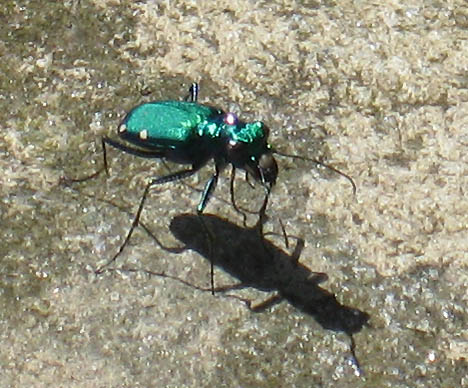

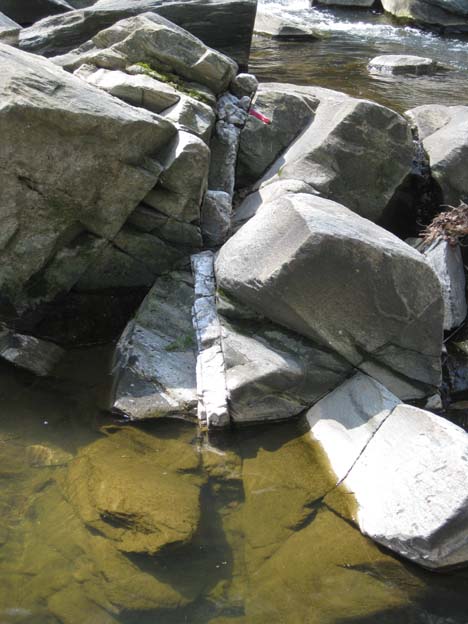
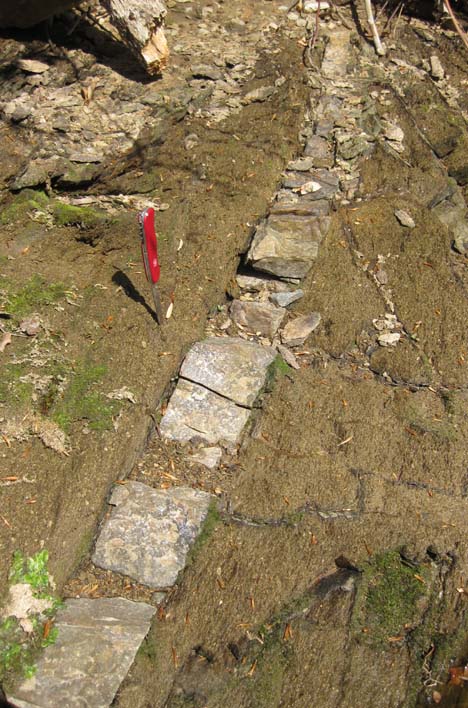
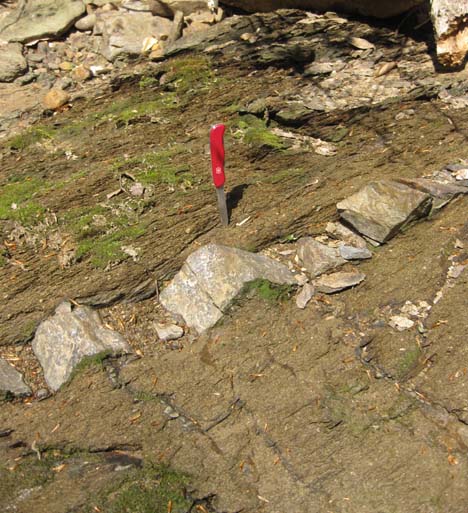
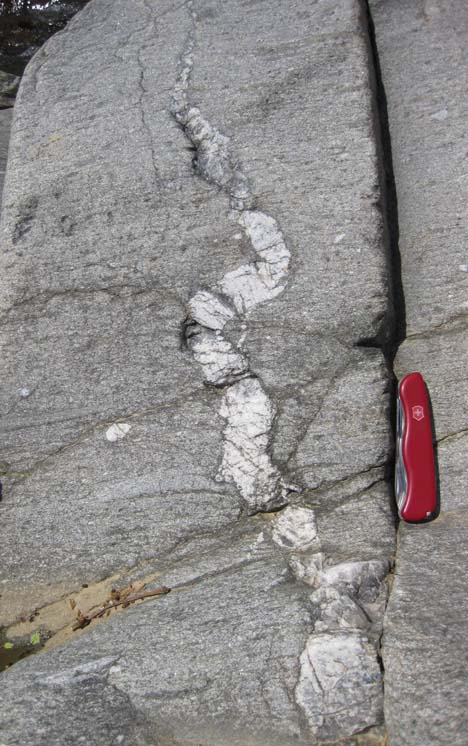
The tiger beetle seems to have been pondering the mysteries of the rocks it was standing on.
Callan,
If you want to see a truly massive quartz vein, go downstream about 0.3 mile from Pimmit to Gulf Branch. Just downstream from the mouth of Gulf Branch, you will see a vein running up the cliff from near the river that starts out about 3 feet wide.
We hike these areas often but do not know much about geology so we will try to learn. We are wondering why the stones in the creek bed of Gulf Branch stream appear to have cuts in them like a stonecutter’s mark.
Hi Sher,
Can you send me a photo of this “stonecutter’s mark” you’re referring to? Either post it online and leave a link here, or e-mail me a copy?
Thanks,
Callan
cbentley((((((((((@)))))))))))nvcc.edu